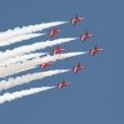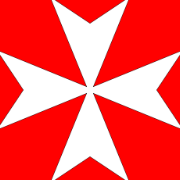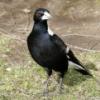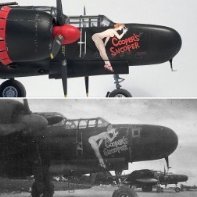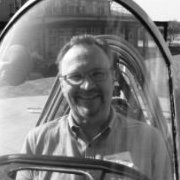Search the Community
Showing results for tags 'RAAF'.
-
Hi all, Here is my latest build, the 1/48 Bristol Bulldog kit from Lindberg. This kit traces its lineage right back to 1968, which makes the moulds 52 years old…! Extensive modifications were made to the kit, including reworking all of the external surfaces (the kit comes with horrible textured fabric surfaces all over and raised panel lines), scratchbuilding the cockpit (the kit cockpit is non-existent), correcting the underside of the nose, correcting all of the nose panels, adding the chin radiator, adding the under-belly panel and circular under-fuselage fairing, replacing and detailing the engine cylinders, pushrods, sparkplugs and other details, scratchbuilding the windscreen, adding gun sights, bomb racks, navigation lights, and a whole bunch of other changes too numerous to list here. I painted the machine in the (rather boring) markings of a Royal Australian Air Force (RAAF) machine, using Red Roo decals for serial numbers. The national markings were spray painted. RAAF machines did not appear to be fitted with radio equipment. No photographic evidence found to show that RAAF Bulldogs sported antenna wires, nor do any photos show that RAAF machines sport lower starboard wing mounted air-driven generators (though the fittings for said generators remained). RAAF machines could be seen with various combinations of bomb racks, upper wing navigation lights and lower wing flare racks. Any combination can be seen. The combination I chose was bomb racks and upper wing navigation lights. The build took me just under four months all up. It was a fun build, but it fought me most of the way. It’s good to finally have something off the bench for the year… Anyway, here are some pics: Build progress and more detail shots are here - All comments, criticism and feedback welcomed. Cheers, BC
- 65 replies
-
- 83
-

-

-
Happy Birthday Royal Australian Air Force Today is the 100th Anniversary of the formation of the Royal Australian Air Force. I am not going to write much about the history the of the RAAF because I am no expert. Suffice to say that on this day 100 years ago this service was formed as an independent air-arm and it has strong claim to be the second such service formed anywhere in the world. It has been a cornerstone of Australia's security and this region's stability ever since. The RAAF played an active and effective role in the Second World War as well as numerous 'smaller' but still very significant conflicts, including Korea, Vietnam, the two Gulf Wars and Afghanistan. It has assisted in many peacekeeping and security operations around the globe and has played an important humanitarian role in innumerable civil defence emergencies. At one stage, immediately after World War Two, the RAAF gave Australia the fourth largest national air arm (by number of operational aircraft) in the world. We Australians, and our various allies should be most grateful for the service that the RAAF has provided over the last century. Three years ago I started my build of an Avro 504 to mark the occasion of the formation of the Royal Air Force. Now, it would seem wrong of me not to do something similar for the Air Force of my adoptive homeland. I've been planning for this for a while and was hoping to have at least one of my three other threads on Britmodeller closed by now, but that has not happened. Time waits for no-one and if I'm going to do this to mark the anniversary then I have to start today; ready or not. If we are going to 'do' the RAAF - let's pick a good subject. Let's look at something fast... perhaps even supersonic. Hmmmm... how about a swing-wing thing...? 🤔 Nice idea! But do you know how big one of those things is in 1/32 scale? My display cabinet is only so large. What about something American with a big droopy nose, two big burner cans tucked in under a single swept back tail and tailplanes set an an outrageous angle of anhedral..... 😀 Again, Nice! But that's a very complex shape and I want to finish this before the next 100 years passes. What about something French and triangular that I once saw when I was a lad at an airshow at RNZAF Wigram... Yes! Now we are talking... Let's do one of these! If you have seen my work before you know what comes next. Get a bunch of drawings together - in this case downloaded as PDF's from the internet - and get them printed to an exact 1/32 scale. In this case there are three 'master' sheets. Get one of each laminated and half a dozen copies of each printed out. Just use everyday copying paper, no need for anything special. Don't worry about the radar under the chin folks - I know that's not an RAAF thing. Here is the compulsory 'sprue shot after opening the box' photo. A fair bit of plywood will be used but most of the parts are jarrah, the same stuff I used on the Avro 504. Jarrah is grown right here in Western Australia, is beautiful to carve and strong as anything. This will be important since there's a good chance this thing will have gear down and once the forward undercarriage bay is cut and the cockpit hollowed out there will be very little remaining intact wood to hold the nose in place. Now we do some dry fitting. Yep - the major fuselage pieces fit together without any gap at all. Note also how there's no ejector pin marks or other blemishes. Tamiya quality fit - although lacking some detail at this point. 🧐 Now I sat down and had a think. How was I actually going to make this thing? Carve the fuselage out of a single block? Or break it into multiple more manageable components. Overall this shape is a bit more complex than, say the Mig-15 that I built in 2016, and requires a bit more thought. Once some decisions are made we can start marking out the cuts. This is the first cut line marked up for the entire project. This is the moment I consider that work actually began - 8.02 PM 31 March 2021 (WA time)...100 years to the day. 👍 Like I say - initially there's a bit of planning and marking up required. Some of the decisions might be a bit counterintuitive, but I've learned a lot over the course of my last few projects and I think there's method in my madness. Who knows though, maybe there's just madness in my method? I've decided that there will be a separate central 'fuselage and cockpit' section cut out that will nestle between the air intakes and the rest of the fuselage assembly. This component is defined at this point by the red ink. Somehow the wing will also need to be accommodated, but for now it's one thing at a time. Now grab two lumps of wood and cut them longer than the section just marked out. One thing I have learned is that surplus wood is not generally a problem - insufficient wood is. Hold the two pieces of wood in a vice and drill a series of holes (four in this case two on either side) clear of the planned cut area. Drill each hole about 3/4 of the way through the entire thickness. I guess it's harmless to go all the way through but this time I chose not to. Now slip a dowel into each of the holes and cut off the surplus. In this case the dowel fitted into the holes perfectly so no glue was required at all! This is a bonus because, although I want these two bits of wood to stick together and stay nicely aligned, fairly soon I'm going to need to pull them apart splitting the fuselage in two again in preparation for hollowing out the cockpit and UC bay. Now cut out the paper plans and spray some cheap photo adhesive onto one side of the prepared wooden block. (No photos this time sorry, I forgot). Cut out the pattern with the bandsaw. It was now getting late at night and this was after Mrs Bandsaw's 'powertool noise curfew' so I left a full 5mm clear from the pattern and just raced through the cut as quickly as possible to get the noisy bit over and done with. This is the birthday of the RAAF, so noise curfew or not, there has to bandsaw action! This is the result so far. There's a long way to go... I hope that some of you come along for the ride. Per ardua ad astra Bandsaw Steve
- 514 replies
-
- 51
-

-

-
- RAAF
- Scratchbuild
-
(and 1 more)
Tagged with:
-
Greetings from the beautiful island of Malta, right in the heart of the Mediterranean! I present to you my HobbyBoss 1:48 General Dynamics F-111C Aardvark, which was built using the FB-111A tooling with decals from Hawkeye Models. The kit is painted as Aardvark A8-132, which began flying as a test platform with the RAAF's Aircraft Research & Development Unit (ARDU) from 1979 to 1998. The Pig now sits on public display at the South Australian Aviation Museum in Port Adelaide, Australia. One fun fact about this airplane was that 132 participated in the 2007 Red Flag exercise while wearing the overall grey colour scheme, in which she flew with No.1 Squadron RAAF, the ‘Fighting First’. A website article and build video can be accessed via these links here: https://malcsmodels.wordpress.com/2024/03/30/building-hobbybosss-148-f-111c-aardvark/ In April 2024, I participated in a model exhibition organised by my local IPMS on the island at the Malta Maritime Museum in Birgu with the 111, where I was presented with the Medal for the Highly-Commended Award.
- 14 replies
-
- 39
-

-

-
I am currently building four Avon Sabres. Since I had already started them I checked with the Mod and have been allowed to enter two in this group build since I have only completed the fuselages on those two. I still intend to complete all four and there may be some mixing of them as I get further down the track - it will be difficult to keep the two builds separated. 😕 Basic kit is Hasegawa F-86F. The Avon Sabre fuselages come from RedRoo / High Planes. To these I am adding RedRoo 166 gall and 100 gall drop tanks and Aires cockpit sets, suitably modified to suit the Australian aircraft. Winders and other stores will come from the spares box. I have decals from High Planes, RedRoo, Dekl's, Ventura, and Model Alliance. This should be enough to allow me to find the markings I want.
-
I've had Tamiya's P-38 in my stash for a long time and found plenty of reasons not to build it. Fundamentally, I think it intimidates me a bit, the kit has such a stellar reputation that I'm sure I'll be the one to mess it up 🙂. Another reason for delaying its start is the scheme I've always had in mind for it, the so-called Haze Scheme. Unlike the later version known as Synthetic Haze which weathered practically not at all, the original Haze weathered seemingly in minutes to a blown-out dusty looking, multi-hued dark blue over light blue to white-ish mess of a scheme. Tricky to replicate, a scheme I've always wondered if I could pull off to my own satisfaction. So, fear of failure in that respect keeping the P-38 on the shelf, too. What's that you say? "Put your big boy pants on and just build the damn thing" Ok. My subject is one of the three P-38 Lightning F-4-1-LO used by the RAAF's 75 Squadron between August 1943 and May 1944, specifically s/n 41-2156 "Limping Lizzie" (also known as "Leaping Lizzie" for its ability to get airborne off a beach). Lizzie wore an original Haze Scheme, and was quite battered to boot. There's quite a few images of it and almost all show a very worn airframe indeed. The cockpit is where we begin. To my surprise I found a 3D cockpit decal set in the box, I must have bought it prior to 24 February 2022. The first task therefore was to remove the moulded surface detail the 3D decals would replace. After that, I followed the usual approach of a black base, a base coat of Interior Green followed by some detail painting and a varied dry brushing. The result of a couple of hours at the bench this afternoon: I shall be using the CMK conversion set to build the PR version and will be cribbing into @Dunny's build from a while ago to try not to mess things up. The only parts of the conversion kit used so far are the control steering wheel thing and the centre console between the pilot's legs, neither of which were substantially different to the kit parts. Interestingly, the next steps take me into airframe assembly so it'll start to look aeroplane-like sooner rather than later. Cheers.
- 111 replies
-
- 24
-

-
- Tamiya 1/48
- P-38F Lightning
-
(and 1 more)
Tagged with:
-
Hi All, My latest completion is Airfix lovely little Tiffie, converted to a 'car door' version - I originally started the build using the Brengun kit but it was not a happy experience. The finished result therefore uses a few elements of this kit (canopy, three-bladed propeller, Vokes filter) to build DN323, which was assigned to 451 Sqn RAAF in 1943 for evaluation. Here's a photo of the aircraft: I built this in tandem with a Kittyhawk of 3 Sqn RAAF - here's the WIP if anyone is interested: And here's the photos: Here's a photo with its build buddy (which I shall post separately): And here's a final shot with a recently built Mk.Ib of a later version, from the same kit: All in all a bit of a struggle of a build, but I'm not displeased with the end result. Thanks to all who have offered kind words and encouragement along the way - it has been sincerely appreciated! Thanks for looking, Roger
- 18 replies
-
- 46
-

-

-
Hi All, My latest completion is Special Hobby's lovely little Kittyhawk, built as AK581 of 3 Sqn RAAF, based in the Western Desert in 1942. Piloted by Flt Lt Geoff Chinchen, the aircraft made a forced landing after being hit several times by enemy fire. Here's a photo of the aircraft after that event: Of note are the oversize codes, and the serial backed with the original Dark Green, which is catered for by the kit decals. It was a lovely little kit to build, although SH have you fabricate your own machine guns and pitot tube, which is a bit cheeky for a new tool kit. Here's the build thread, which was in tandem with a 'car door' Typhoon: And here's the photos: Here's a final shot with the Tiffie: This was a lovely little kit to build - thanks to all those who have added kind words and encouragement along the way! Thanks for looking, Roger
- 13 replies
-
- 32
-

-

-
- Special Hobby
- WWII
-
(and 1 more)
Tagged with:
-
Hi All, My next build will see the Azure Blue and Mid-Stone get an airing - it has been over a year since my last desert scheme, so it's long overdue! I'm going to make up for it too, as this will be a dual build of Special Hobby's new tool P40D Kittyhawk Mk.I, and Brengun's Typhoon Mk.Ib. Now I did build a Tiffie just a couple of months ago, but this is different; I have not built the Brengun kit before, it's desert camo, and most importantly, it will have the 'car door' canopy! Here's the Kittyhawk boxart: Here's the sprues: Special Hobby have upped their game - the detail looks superb. Here's the decals: There are 4 schemes in the kit, one of which is Neville Duke's oft-modelled mount. I do fancy a shark mouth, but might look for a less-modelled option. Here's the Tiffie box art: I have never built a Brengun kit before, but on the evidence presented the sprues appear well-detailed and crisp: Here's the decals: They look a bit over-bright, and Sky codes? Hmmm - will look into that. 4 schemes are provided for: All the desert camo options are 451 Sqn RAAF aircraft, so it would seem churlish not to build an Aussie bird! I'm looking forward to this one! Thanks for looking, Roger
- 61 replies
-
- 13
-

-
After slogging through a big build of a short run kit for the past few weekends, I needed a little mojo-building exercise to get my head back in the game. Going through the stash I discovered a newer-tooled Airfix Spitfire Vc that I'd bought for less than $10USD some time ago. Whenever I see a new Airfix kit on sale for less than a tenner, I instinctively buy it for just such an occasion. I also had an Eduard “Zoom” cockpit set and canopy masks so the choice to build this little Spit was a no-brainer. This was the result of a weekend build-a-thon: 74556352-FF48-4229-B930-6F4416054119 by Evan Bailly, on Flickr Also present in the stash was a multi-topic decal set from DK Decals that I'd purchased for a previously built P-47. In the set were the markings of two RAAF Spitfire Vc airframes, and I chose A58-180 for its odd nose art of a bull chomping on a rising sun flag. Helped by a few older threads here on BritModeller, I think I got reasonably close to the subject for a mostly out of the box build. F73F86FC-FE78-4401-8E9F-5028D34EEB64 by Evan Bailly, on Flickr Paints were all from AK's Real Colors range, RC340 for the RAAF Foliage Green, and RC241 for the RAAF Sky Blue. The dark brown was mostly standard RC287 RAF Dark Earth but the areas where the the original aircraft had been over sprayed (over the RAF roundels, and the RAAF's earlier Squadron and tail empennage markings) were a mix of dark earth and RC081 to provide a little tonal difference. Weathering came from a sponge on a stick for chipping and artists oils for washes and filters. To Arifix's plastic I added the previously mentioned Eduard "Zoom" cockpit details and, made from wire, the rod-type IFF antenna under the starboard wing particular to RAAF spitfires. Other than those the kit was built out of the box and according to Airfix's instructions. Total build time: two evenings and a few Sunday morning minutes for cleanup and photos. 99DC7EB6-E152-4858-BFFB-D4908FBB9120 by Evan Bailly, on Flickr 1AE774CF-3F67-4D9F-8035-97400CC43C34 by Evan Bailly, on Flickr 40B90BE7-20F0-4DA7-93AD-258C14752275 by Evan Bailly, on Flickr 5456F7C0-332F-482C-9435-70996E14108C by Evan Bailly, on Flickr
- 10 replies
-
- 32
-

-

-
There was only ever one rocket-armed Wirraway. A little history... In 1949 the front-line fighter of the RAAF was the Mustang, and the first Vampires were starting to arrive (the RAAF's first jet fighter). Advanced training and refresher training for fighter pilots was being carried out using CAC Wirraway aircraft, but the Wirraways were not able to train pilots in the full syllabus required by fighter pilots, since they were not fitted with gyro-stabilised gun-sights and they could not carry rocket armament. So in December of 1949 the RAAF Director of Technical Services wrote to RAAF Headquarters on behalf of the Air Member for Technical Services with a request to enable a full syllabus of training to be carried out with Wirraway aircraft by fitting the following items: An AN-N6 Cine Camera Gun (as an alternative to the G.45 gun cameras already fitted); A Gyro Gun Sight (Mark 2D Series 2 or 3) in lieu of the Reflector Sight installed by Wirraway Order No. 134 (offset to the left to enable the instructor in the rear seat to have an unobstructed view when using the Aldis sight); Rocket pods (zero length rails) to enable the carriage of 6 rockets (3 under each mainplane) in such a manner as they do not interfere with bombing and gunnery installations; and Provide remote controls in the rear cockpit for the operation of the VHF set installed by Wirraway Order No. 173 (which only specified operation from the front seat). It was requested that the Air Armament School (AAS) at East Sale be instructed to carry out a prototype installation, and that Technical Services officers would visit if assistance was needed. This was seen as an urgent training requirement, and the AAS prototyping was requested as soon as possible. The Mark 2D Gyro Gun Sight and the AN-N6 Camera were both designed for 24V operation, requiring voltage boosters to enable them to be operated from the Wirraway’s 12V electrical system. Tests were required to determine if the power from the Wirraway’s engine-driven generator would be sufficient for these extra items and their voltage boosters. The requirement that the RP installation should not interfere with the existing bombing and gunnery installations was ambiguous, as it did not specify if the aircraft should carry under-wing gun packs (which were already fitted to all Wirraways at this time) and RP rails at the same time, or if the gun packs could be swapped for RP rails. The prototype installation carried out at AAS followed the second of these interpretations. Records show that Wirraway A20-729 was used for a mock-up installation and A20-723 was modified for the full installation and flight trials. The first flight with the new equipment fitted was carried out on 20 July 1950 at East Sale. The first rocket firing was carried out during a flight on 24 July. Further successful firing tests were carried out in July. But the program was discontinued and no other Wirraways were fitted with this capability. I've uncovered a sketch of the proposed rocket installation by the AAS, but I've never come across photos of the aircraft or the trials. So I'm basing this build on "educated speculation". So I'm planning to model A20-723 fitted with six RP-3 rockets on zero-length rails, a gyro-stabilised gun-sight and an AN-N6 gun camera on the wing centre-section. To duplicate this aircraft, I'll need a Wirraway kit, and ideally some rockets plus a gyro-stabilised gun-sight. The Wirraway will be the 1/72 Special Hobby kit (in all its flawed glory). Looking at my stash, the gun-sight and zero-length rails will come from a Tamiya F-51 kit and the RP-3 rockets will come from a Valom Bristol Buckmaster (why do I have two of those in my stash???). Here's where the fun will begin: First up is to construct the fuselage frame and detail the cockpits. Here are a couple of photos of the start of this process, alongside a scratch-built fuselage frame I've made for an MPM Wirraway I'm also building. Important to note that we must ignore the kit instructions here... Wirraways were all silver inside, no C364 "interior green" at all. None. Everything was silver, except black instrument panels, black electrical panels, and various red and yellow highlights for controls. No "interior green". And another view showing the instrument panels. You can see that the framework tubes are fairly chunky and SH have not replicated the framework too well. Several extra tubes have been added, and some real tubes are missing. Plus the foot-troughs should be discontinuous, not one long trough as the kit provides. But I'm living with it for this model... definitely changing it for my 1/48 and 1/32 builds... Edit: Note that there are two radio sets under the rear instrument panel (R.1082 and T.1083) - these were no longer in use by the 1950s, so I've removed them from the model.
- 36 replies
-
- 14
-

-
- CAC
- Special Hobby
-
(and 1 more)
Tagged with:
-
Another Wirraway project I have on the go is the MPM Models 1/72 kit, which I'm planning to build as the legendary A20-502, known affectionately (and ironically) as "The Rocket". This aircraft served with No. 5 Squadron in Queensland and New Guinea, racking up an enormous number of sorties over its long life. To quote the West Australian newspaper, Friday 20th April 1945: ANCIENT WIRRAWAY. Achievements of the Rocket. MELBOURNE, April 19.-Now operating with an RAAF Army co-operation squadron in the Solomons is an Australian-designed and built Wirraway which is claimed to be the oldest single-engined aircraft flying in operations in the South-West Pacific area. Known as the Rocket, this Wlrraway, which began its career with an RAAF Army co-operation squadron on March 10, 1942, has completed 953 sorties and flown almost 1100 hours. It has out-lived four engines. Last month, when the Wirraway celebrated is third birthday, Flying Officer Ted Reynolds, of West Maitland, NSW, flew it on a tactical reconnaissance over Japanese positions at Bougainville Island. The Wirraway has dropped smoke bombs as target markers for Corsair fighter-bombers of the RNZAF. While the New Zealanders' dropped their 1,000lb bombs on Japanese positions it flew low over the target to observe the results. It has pinpointed numerous targets for the AMF. It has flown so low that once a pilot was able to signal base that a wounded Japanese had blood trickling down a leg. Other important jobs it has carried out include the re-charting of maps of Bougainville Island. On survey work it has flown on steady photo reconnaissance flights. It has acted as mail and supply dropper to front line troops. In artillery reconnaissances it has been shaken by mortar fire whilst flying above the barrage. It has dive-bombed targets inaccesible to high-speed bombers, and fighter-bombers. Now in its fourth year of Army co-operation work, the Wirraway is under the care of Flt-Lt F. T. Binns, of Sydney, NSW, an engineer officer. "The fact that the Rocket has never had a major misfortune is not the least of its claims to fame." he said. "The nearest it has come to disaster is wing tips damaged in ground loops." Flt-Lt Binns considers the Wirraway the ideal aircraft for Army co-operation work, because of its handling qualities and complete lack of vices. Wirraways are doing particularly fine work in the present campaigns, giving splendid co-operation to the AMF. The aircraft ended its life during a particularly exuberant New-Year's eve party in January 1946, when it was burned on a bonfire together with a CAC Boomerang! Sadly, the aircraft had been approved for preservation in the Australian War Memorial in Canberra due to its longevity and high public profile, but the signal from RAAF headquarters arrived at the squadron after the deed had been done! My plan is to model this aircraft as it appeared in May 1944 when used in some supply dropping tests at Mareeba, Queensland. It was fitted with rectangular supply canisters (different to the later cylindrical "Storepedo" designs used in New Guinea) plus a message pick-up hook. Luckily I have a copy of the factory drawings of the message hook, so I'll be able to replicate that nicely. The aircraft was finished in the standard camouflage scheme of Foliage Green / Earth Brown and Sky undersides. Here's a couple of images of what the aircraft looked like. Below you can see a supply canister being loaded under the port wing: Below you can just make out the message pick-up hook under the fuselage centre-line: Loading the experimental stores canisters... lots of wear around the engine cowl... And finally a later image with the aircraft overall Foliage Green and white empennage, taken on Bougainville around April 1945. If you look carefully, you can see 3 aerial wires leading from the top of the antenna mast - one to the top of the rudder (as usual) and one to each wing-tip (not usual!): So what are we starting with in the MPM Models kit? Well, it's pretty basic. Large gates on the moldings, honking ejector pin marks and annoying flash along the parting lines. Minimal cockpit and zero wheel-well detail... The propeller is very basic, and the engine is the figment of some tool-maker's imagination! The fuselage side panels bulge out (which they should not do) and some of the surface details on the wing panels is fictional, but at least I know what I'm working with. First step after cleaning up the moldings was to add some basic internal detail to the insides of the fuselage side-panels, representing the aluminium extrusions and pressed formers over which the fabric was attached. These panels were removable on the real aircraft, making maintenance of the hydraulics, the engine control push-rods and elevator/rudder cables very simple. More coming...
- 17 replies
-
- 11
-

-
- CAC
- MPM Models
-
(and 1 more)
Tagged with:
-
Hi All, With the Christmas festivities out the way it's time for a new project. Although I do have some odds & ends to sort out on a couple of other builds, I do enjoy starting a large build at this time of year, much like the breadbin-swapping modelling machine that is @AliGauld. At this time last year my employment status (or lack thereof) precluded such an extravagance, so it's nice to be able to kick off another 'heavy'. This time around I've been lucky enough to get my hands on Revell's Halifax B Mk.III, which was kindly transported to these parts by my parents. Now many of you may know that this kit is currently OOP, but the large-scale legend @tomprobert kindly agreed to part with his kit (he likes them bigger these days, he said 🤣). Anyhoo this rather large end-opening box is now in my possession: It's a BIG box! Tom very generously threw in a few extras - a set of Freightdog wheels: And an Eduard interior set, along with a rather obligatory mask set: Now there is a LOT of plastic in that box. Here's the sprues: The transparencies: A rather nice set of decals: The kit allows for 2 marking schemes, an RCAF aircraft 'Oscar' (which seems to be an oft-modelled option), and an RAF aircraft. I've decided to model a 100 Group RAAF aircraft, probably one of these two: (Both images copyright Australian War Memorial - for discussion only and will be removed on request). I am led to understand that the kit is a little deficient in the bomb department, so it might finally be time to add this to the pot: Now that's a festive mix! I might be a little slow getting this going, but it should be a hoot! Thanks for looking, Roger
- 180 replies
-
- 31
-

-
I am joining with the Academy Ventura to be finished as a RAAF 459SQN aircraft which operated in the Mediterranean Theatre of Operations in 1943. My kit came from a club swap meet without instructions or decals, so I found some replacement instructions on Scalemates. The Red Roo conversion includes decals for the aircraft I am building. The conversion also includes a new cockpit, replacement turret mount, replacement intakes and desert filters and radar antenna.
- 35 replies
-
- 24
-

-
- 1/72
- conversion
-
(and 1 more)
Tagged with:
-
Hi All, My next project will be Airfix' newish (2015) Beaufighter TF.X, finished as LZ407 of 455 Sqn RAAF, which was part of the Dallachy Strike Wing. Now I completed a 1:48 Banff Strike Wing Mossie last year, so this is the next stage of the project! I'm very happy to say that I'll be building alongside the Hairy Stick Wizard himself, @bigbadbadge! We thought we'd have a bit of fun with an informal group build, so anyone who cares to join the banter is more than welcome. @AliGauld has already presented a note as he built a Dallachy Beau last year, @mark.auis busy with his Air Ministry ME262, but anyone else feel free to jump on board! I've built a couple of 1:72 Airfix Beauforts and a Blenheim Mk.IV this year - I was enormously impressed with both kits so am looking forward to what this one has to offer. Here's the box art: Here's the sprues, in Airfix usual 'old' soft pale grey plastic: This is going to be largely OOB, although I have a mask set: Now thus far I have been unable to find photos of LZ407. I do have information on the scheme (Chris has kindly shared with me details of the Avieology decal pack, which I shall not publish here for copyright reasons). However, the scheme states that the airframe was originally delivered to the squadron in 1943, and was certainly sometime equipped as an RP-armed aircraft. Here's some shots of contemporary aircraft from the wing (144 Sqn) (copyright IWM - images for discussion only and will be removed on request): These were heavily weathered airframes, so this should be fun! Specifically of note: - Oversized black squadron & aircraft codes - Overpainted areas of the original 'Sky' code letters - Overpainting of both upper & lower invasion stripes - Specific patched areas of flak damage, along with a replacement tail I'll also need to pay attention to the RP layout, as I believe it was specific to the Dallachy Beaus by this time. This is a bit of a placeholder as I'm still busy with my Typhoon & Hurricane II.c at the moment, but looking forward to kicking this one off with Chris! Thanks for looking, Roger
- 69 replies
-
- 11
-

-
Hi All, My last completion for 2023 (I can say this definitively on New Year's Eve 🤣) is Airfix' lovely Beau TF.X, completed as LZ407 of 455 Sqn RAAF, based at RAF Dallachy, Moray, Scotland in 1945. 455 Sqn was part of the Dallachy Strike wing, and the squadrons carried out strikes on German shipping using both rocket projectiles and torpedos (LZ407 was an RP-armed aircraft). I do not have a photograph of LZ407, but here is a photo of other Dallachy Beaus (copyright IWM - images for discussion only and will be removed on request): Now this was part of an informal GB with @bigbadbadge, and both he and @AliGauld were most generous in sharing their information on Dallachy Beaufighters. Anyone else considering the build should consider getting hold of the superb Aviaeology pack, which although OOP provides a wealth of detail on the Dallachy wing aircraft. Here is the WIP if anyone is interested: The build was OOB, the only 'improvement' was reshaping the elevator actuators with brass rod. I've attempted to replicate the heavy weathering which these airframes displayed. And so to the photos: Now as this is the last build of 2023 a couple of indulgences. First a shot with another RAAF Beau, 'Slippery Ship II', from the 1:48 Tamiya kit: Finally a family shot with a couple of other 2023 Bristol builds, Airfix' excellent Blenheim Mk.IVf, and Beaufort Mk.I (completed as a Mk.Ia): So that rounds out 2023 with a total of 14 builds for me, which is not a bad total! Thanks very much to everybody who has been part of the journey, and for all your kind words, advice and encouragement. Happy New Year to one and all, and let's look forward to plenty more plastic-mangling in 2024! Thanks for looking, Roger
-
Managed to move this one over the finish line yesterday. My third in what will be a long line of S&M Models 1/72 RAAF Canberra's. The kit is a good one and I thoroughly enjoyed researching and putting this one together. Details of the build for those interested can be found here: This particular aircraft was inspired by an all around good guy, Australian Aviation Historian and fellow modeler Roger Lambert. Roger and his platoon were the benefactors of this Magpie's work when on patrol in SVN. Rather than attempt to tell the story it is well worth a read here: 5 RAR Articles: Blondes, Bombs and Bunkers - https://www.5rar.asn.au/soldiers/blondes-bombs-bunkers.htm Magpie 31 - https://www.5rar.asn.au/soldiers/magpie-31-page-1.htm Magpie 31 Part 2 - https://www.5rar.asn.au/soldiers/magpie-31-part-2.htm I’ve also included a photo of Roger mid tour in 1969; L to R: CPL Jackson. Lt Roger Lambert and Platoon Sergeant, Peter Knight. Image was taken during a water resupply hence the empty water bottle carriers. Details of the mission: Pilot that day on the right The finished product In good company Now to starting thinking about the next one. Cheers, AGW..
- 17 replies
-
- 55
-

-

-
Hello everyone, Here’s my latest completion, the 1/72 Airfix T.11 Vampire, built as a T.35A Vampire of 2 Operational Conversion Unit, Royal Australian Air Force, c.1967. I don’t usually build jets (the last jet I built was over 10 years ago), so this is something a little different for me. The kit is another little gem from Airfix. The only fit problem I had with at the lower wing panel roots, and at the roots for the horizontal stabliser pieces, but these weren’t too much of an issue. I did replace the kit cockpit with the Pavla resin set, which I really think helps to set off the busy and cramped look of the cockpit. I also lost the nose gear side door at some point, so had to scratch build another. The glazing also needed a bit of a polish, but it fit like a dream. I had to mask and spray both the outside and the inside given that massive canopy was going to be displayed open. The model was finished with Alclad RAF high speed silver over gloss black, with the day glow being a mix of SMS Fluro Orange and SMS Fluro Red. Decals came from Xtra Decals. These decals went down nicely, but I did still have some issues with adhesion and cracking / tearing, even after clear coating (some of which required some fairly clumsy repairs – don’t look too hard….). I am still yet to master this brand, I must admit. I made a small base for this one, representing a small piece of tarmac (a pre-printed piece of cardboard), a unit patch, and a small label. The ladders and chocks were scratch built. All in all, this one took about 6 weeks from start to finish. This is a great little kit from Airfix which goes together well and looks great. Just make sure you add enough nose weight into the front end 😊 Thanks for looking – all comments and feedback welcomed! Cheers, BC
- 26 replies
-
- 71
-

-

-
After losing a bit of mojo in the early part of the year, I was cajoled encouraged into an informal group build with @Dunny and @AliGauld with the humble Brewster Buffalo as its subject. It served its purpose and I ended up thoroughly enjoying it, despite being quite rusty and making some very basic errors. Nonetheless, I was quite happy with the result. I actually finished it several weeks ago but just now got around to taking some glamour shots. The WIP is linked below. The short version is that this is the 1/48 Tamiya kit and I built it right out of the box with zero additional enhancement. I wanted to build a Singapore defender and settled on RAAF 453 Squadron's AN204 as my subject. P/O Robert William Drury scrambled in AN204 on 22 December along with 11 other Buffaloes to intercept a force of 15 Zeros escorting an attacking force of Japanese bombers flying towards Kuala Lumpur from the north. During the widespread dogfight Drury's aircraft was badly damaged and he crash landed back at Kuala Lumpur sustaining serious injuries. He died later that evening. I was unable to find the airframe code letter for Drury's aircraft so I went for D as its his initial. I mixed the colours; my versions represent the equivalent US colours to the RAF standard (this US-built airframe was donated by the RAF to the RAAF for the defence of Singapore) and they look reasonable to my eye. We can never really know, can we? I painted all of the markings except for the roundels and one fin flash (the other was lost to a masking tape mishap). Anyway, the who story in all its detail is here.. ...and the photos here. Cheers.
- 15 replies
-
- 57
-

-

-
- 1/48 Tamiya
- Brewster Buffalo
-
(and 1 more)
Tagged with:



